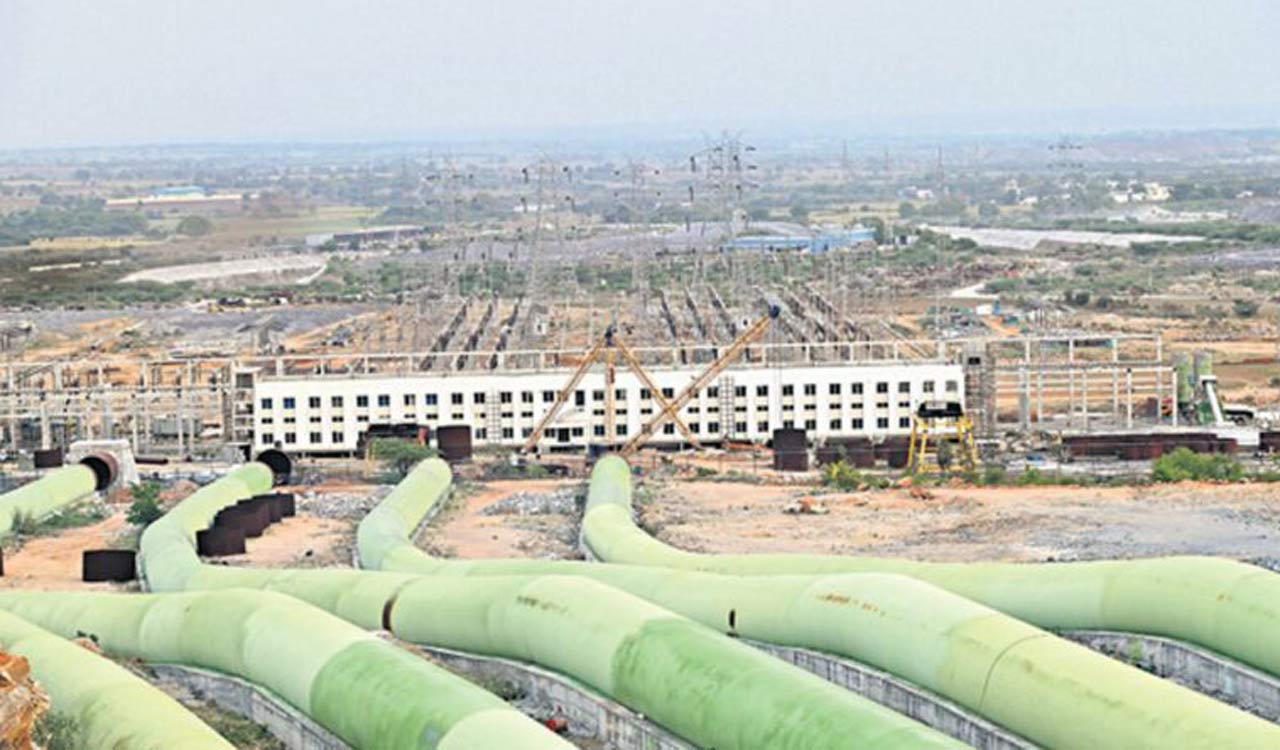The reservoirs were built using the hillside as their natural walls to hold the water in a more secure way.
Updated On – 08:15 PM, Sat – 9 September 23

File Photo
Hyderabad: The massive reservoirs that have come up as part of the multi-stage Palamuru Rangareddy Lift Irrigation Scheme (PRLIS) reflect largely the great legacy of the Kakatiyas carried forward. They are planned in such a way that the basic objective of minimizing displacement is met.
The reservoirs were built using the hillside as their natural walls to hold the water in a more secure way. They receive the flood runoff from the catchment instantly as bonus to what they were intended to receive though the pumping system from Krishna.
Enormous efforts have gone into designing of the reservoirs that are holding out big hope for meeting drinking water, irrigation and industrial needs in the southern districts of the State, thanks to the vision and support of Chief Minister K Chandrashekhar Rao. Each of the reservoirs is strategically placed to serve the most critical purpose of transforming the parched lands of Palamuru into a paradise, a long cherished dream.
Major reservoirs such as Komuravelli, Mallanna Sagar, Ranganayaka Sagar and Annapurna were also built as part of Kaleshwaram. They manifest sustainable irrigation plans and successful water management methods. The five major reservoirs that have been built under the PRLIS also owed to the urge of create adequate storage facility, key for harnessing the water resources.
The massive network of lift irrigation is intended for lifting 90 TMC of flood water in 60 days ( 1.50 TMC per day) during flood season from the foreshore of Srisailam reservoir located at Yellur village of Kollapur mandal to KP Laxmidevipally village in Kondurg mandal (Mahabubnagar district), which is the point of highest elevation.
It involved 5 stages of lifting and then utilizing water by gravity. The scheme contemplates en route irrigation under different reservoirs. Indeed, it was a gigantic task. Had it been implemented as planned initially, as many as 47 villages and 16,342 smaller habitations with a population of 84,400 would have been displaced.
But it was minimized by a great deal of meticulous planning. The submergence was restricted to 23 villages. In all, 2481 habitations with 11,025 inhabitants were targeted for rehabilitation. The credit goes entirely to the concern of the Chief Minister for the communities that have inhabited the pocket for so long.
An approach channel takes off from the foreshore of Srisailam Project near Yellur village in Kollapur mandal. The water is drawn through tunnel connected to it and lifted to fill the proposed Anjanagiri reservoir at Narlapur village.
The Anjanagiri reservoir which is entirely a new lake created as part of the project at Narlapur would have a gross storage capacity of 8.41 TMC with its FRL being 345 metres. It will be supplemented by another reservoir built in parallel to it as part of the Kalwakurthy lift irrigation scheme.
The Veeranjaneya reservoir built as part of the Stage II lift at Yedula is flanked by two hillocks ensuring the much needed protective support to hold water at its gross storage capacity of 6.55 tmc. The reservoirs in Stage I and Stage II are connected by an open canal and tunnel system.
The Venkatadri Reservoir (stage III) at Vattem has a gross storage capacity of 16.74 tmc. The Kurumarthiraya reservoir ( Stage – IV) at Karvena and Uddandapur reservoir (stage V) have the gross storage capacity of 16.74 tmc and 17.34 vTMC respectively. The Uddandapur reservoir was built at an elevation of 57.99 metres, probably the highest in the State.
An approach channel takes off from Udandapur Reservoir, and the water is drawn through a canal and subsequently a tunnel connected to it and lifted to fill the K.P.Lakshmidevipally reservoir. A significant aspect of the reservoirs built as part of the project is that they have been named after the principal deities of the local shrines, adding to the affinity and reverence of the people for them.


